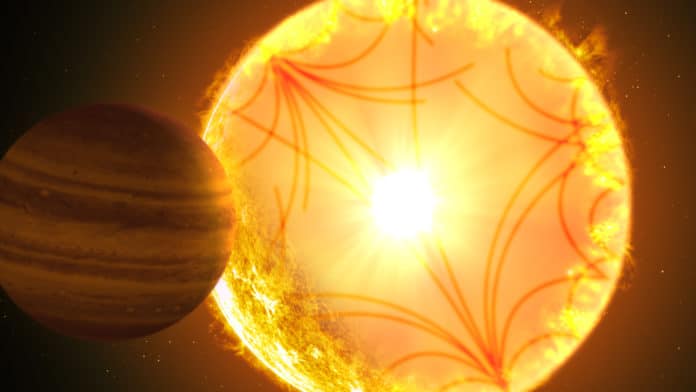In February 2019, Ashley Chontos, a graduate student of University of Hawaii’s Institute for Astronomy, confirmed the existence of a massive hot Jupiter Kepler-1658b using NASA’s Kepler telescope. The exoplanet swirls around its star every 3.85 days. In addition, the exoplanet is said to be one of the known planets that orbit a star whose future version can be equated with the present Sun in the Milky Way galaxy.
The initial estimate of the planet’s host star was off, so the sizes of both the star and Kepler-1658b were vastly underestimated. It was later marked as a false positive — that is, scientists thought the data did not really point to a planet — when the numbers didn’t quite add up for the effects seen on its star for a body of that size.
Kepler-1658b moved from planet possibility to false positive and back until new software was utilized to refine the information and reclassify it, transforming it from an information peculiarity to a conceivable planet.
Randomly, a group at the University of Hawaii was ready to venture in at simply the opportune time. As a component of her first-year research project, lead creator Ashley Chontos, a graduate understudy with the university’s Institute for Astronomy, revisited Kepler information searching for targets to reanalysed in 2017.
Chontos said, “Our new analysis, which uses stellar sound waves observed in the Kepler data to characterize the star, demonstrated that the star is, in fact, three times larger than previously thought. This, in turn, means that the planet is three times larger, revealing that Kepler-1658b is actually a hot Jupiter. With this refined analysis, everything pointed to it being a real planet. Next came confirmation.”
Dan Huber, co-author, and an astronomer at the University of Hawaii said, “We alerted Dave Latham (a senior astronomer at the Smithsonian Astrophysical Observatory, and co-author on the paper) and his team collected the necessary spectroscopic data to unambiguously show that Kepler-1658b is a planet. As one of the pioneers of exoplanet science and a key figure behind the Kepler mission, it was particularly fitting to have Dave be part of this confirmation.”
Chontos said, Kepler-1658b is one of the closest known planets orbiting a future version of our Sun, and revealed new constraints on the complex physical interactions that cause planets to spiral into their host stars. Kepler-1658 is a perfect example of why a better understanding of host stars of exoplanets is so important. It also tells us that there are many treasures left to be found in the Kepler data.”
